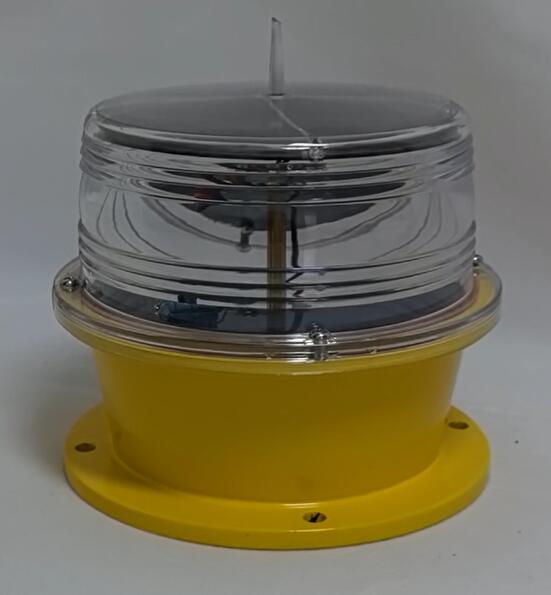Guiding the Seas: The Versatility of Solar Nautical Lanterns
Navigating the vast expanse of oceans, rivers, and harbors has always relied on dependable illumination. As maritime activities continue to expand, the role of lighting technology has become even more critical. Among the latest innovations in this field, solar nautical lanterns have emerged as a transformative solution, combining sustainability with functionality to meet the needs of modern maritime navigation.
Sustainability Meets Reliability
Solar nautical lanterns harness the power of the sun to provide reliable illumination for marine environments. Unlike traditional lanterns that depend on fossil fuels or grid electricity, these solar-powered devices operate independently of external energy sources. This self-sufficiency not only reduces operational costs but also aligns with global efforts to reduce carbon emissions.
The integration of solar panels and rechargeable batteries allows these lanterns to store energy during the day and deliver consistent lighting through the night. Their robust designs ensure durability against harsh weather conditions, making them an ideal choice for marine environments where reliability is paramount.
Enhanced Safety for Mariners
One of the primary roles of solar nautical lanterns is to enhance safety for maritime navigation. They serve as markers for buoys, docks, and other critical locations, guiding vessels safely through waterways. The bright, long-lasting illumination reduces the risk of accidents, especially in low-visibility conditions such as fog, heavy rain, or nighttime operations.

Additionally, many solar nautical lanterns are equipped with advanced features such as automatic light sensors, programmable flash patterns, and synchronization capabilities. These features ensure the lanterns are easily distinguishable and can adapt to specific navigational requirements, further improving safety.
Cost-Effective and Low Maintenance
The cost-effectiveness of solar nautical lanterns is a major advantage for operators. With minimal installation requirements and no dependency on external power supplies, these lanterns significantly lower operational expenses. The absence of fuel or regular power connections also eliminates the ongoing costs associated with traditional lighting systems.
| Solar Nautical Lanterns |
| Solar Nautical Lanterns |
Maintenance is another area where solar nautical lanterns excel. Their durable construction, often using corrosion-resistant materials, ensures they can withstand prolonged exposure to saltwater, wind, and UV radiation. Additionally, the use of LED technology extends the lifespan of the lanterns while maintaining high performance.
Applications Across Diverse Marine Settings
The versatility of solar nautical lanterns makes them suitable for a wide range of applications. In ports and harbors, they act as navigational aids to direct ships safely into berths. Offshore, they are deployed on buoys and platforms to mark safe passage or hazardous zones. Coastal authorities use these lanterns to delineate swimming areas, fishing zones, and protected marine habitats.
Moreover, solar nautical lanterns are increasingly being utilized in remote and off-grid locations. Their ability to function autonomously for extended periods makes them invaluable in areas where traditional lighting infrastructure is impractical or unavailable. This adaptability ensures their relevance in diverse maritime environments.
A Commitment to Environmental Stewardship
In addition to their functional benefits, solar nautical lanterns reflect a commitment to environmental stewardship. By utilizing renewable energy, they eliminate the need for fossil fuels and minimize greenhouse gas emissions. Their low environmental impact aligns with international maritime regulations and sustainability goals, making them an environmentally responsible choice for navigation aids.
The use of recyclable materials in the construction of many solar nautical lanterns further enhances their eco-friendly credentials. By prioritizing sustainability, manufacturers are contributing to the preservation of marine ecosystems while meeting the operational needs of the maritime industry.
Driving Innovation in Maritime Technology
As the maritime sector embraces technological advancements, solar nautical lanterns represent a step forward in integrating innovation with practicality. Manufacturers are continually improving their designs to increase efficiency, enhance durability, and introduce smart features. For instance, the integration of GPS technology and remote monitoring capabilities allows operators to track and manage lanterns from centralized control systems, streamlining maintenance and ensuring optimal performance.
Furthermore, advancements in solar panel efficiency and battery technology are enhancing the performance of solar nautical lanterns in challenging environments. These innovations ensure the lanterns remain reliable even during extended periods of low sunlight or extreme weather conditions.
Solar nautical lanterns are revolutionizing maritime navigation by offering a sustainable, reliable, and cost-effective lighting solution. Their ability to operate independently, withstand harsh environments, and enhance safety makes them indispensable in modern marine operations. As the maritime industry continues to prioritize sustainability and innovation, solar nautical lanterns will undoubtedly play a central role in shaping the future of navigation aids.
By investing in these advanced lighting systems, maritime operators can achieve operational efficiency while contributing to global sustainability efforts. Solar nautical lanterns are not just illuminating the seas; they are paving the way for a brighter and greener future.
